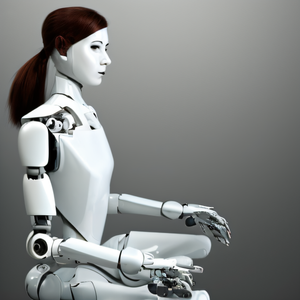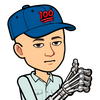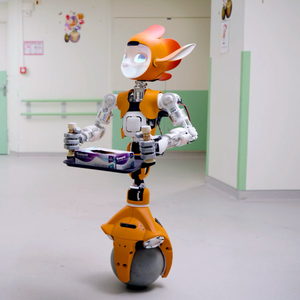As a writer exploring the ways in which robotics can benefit human health and well-being, I have discovered that in recent years, there have been massive strides forward, transforming various aspects of our lives, particularly in the field of meditation, mental health, and rehabilitation. We, as a society, are constantly seeking ways to improve our overall well-being, and robots are proving to be valuable allies in this pursuit. By integrating technology with mindfulness practices, we can achieve greater emotional regulation, physical healing, and overall wellness. Let's explore these areas in more detail.
Achieving Inner Peace with Robots
Meditation has been recognized for centuries as a powerful tool for promoting mental and physical well-being. By training the mind to focus on the present moment and cultivate a sense of inner peace and calm, meditation can help reduce stress and anxiety, improve concentration and sleep, and even boost the immune system.
Despite knowing about these benefits, in our fast-paced, digitally connected world, many people struggle to incorporate meditation into their daily routines. For whatever excuses they allow themselves to believe, some truly find it difficult to quiet their minds and stay focused. Both children and adults are seeking ways to find inner peace and better cope with stress and anxiety. This is where meditation robots enter the zen room. This growing interest in meditation has paved the way for the emergence of an exciting new category of robots specifically designed to guide us through our mindfulness journeys.
Symptoms of anxiety in children and teens may include:
- Constant or excessive worry
- Irritability
- Sleep disturbances
- Trouble concentrating
- Fatigue
- Restlessness
- Physical symptoms like headaches and stomachaches
Meditation has been shown to be an effective tool in helping children and teens cope with anxiety. Regular meditation practice can help them develop emotional regulation, reduce stress, improve focus, and increase self-awareness. By teaching children and teens mindfulness and relaxation techniques, they can better manage their anxiety and foster resilience and well-being.
Meditation robots for children have gained significant popularity in recent years. These gadgets make meditation accessible and enjoyable for younger generations by using techniques such as voice guidance, visual cues, and biofeedback sensors to help ensure they develop healthy coping mechanisms early in life.
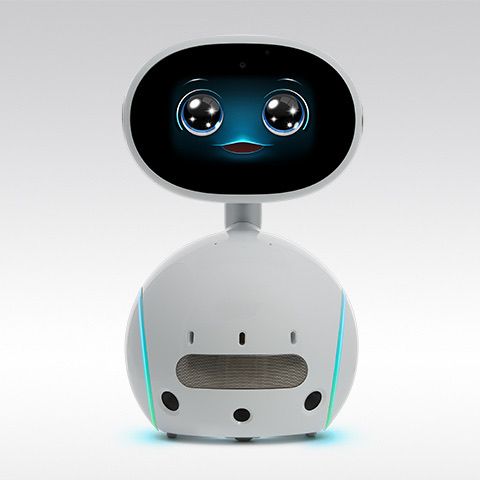
One such example is the Zenbo, a small, friendly robot that guides children through mindfulness exercises, teaching them the importance of self-awareness and emotional regulation and even reminding them to take breaks and stay hydrated.
The benefits of using robots for meditation practices are manifold. Firstly, they offer a consistent and reliable guide for users at any stage of their meditation journey, helping them develop a regular practice. With the personalized guidance of these robots, users can better understand their own emotional states and learn effective techniques to manage stress and anxiety.
Additionally, meditation robots can provide immediate feedback, enabling users to track their progress and make improvements to their practice. In the iconic words of Neo in The Matrix, "There is no spoon" This is a powerful reminder that when it comes to meditation, it is our own perceptions and beliefs that shape our experience.
For adults, there is a range of bots and devices that have features designed to help users achieve a deeper state of relaxation and mental clarity. An example is Muse, a headband that uses EEG sensors to track the user's brainwaves and provide real-time feedback on their meditation practice.
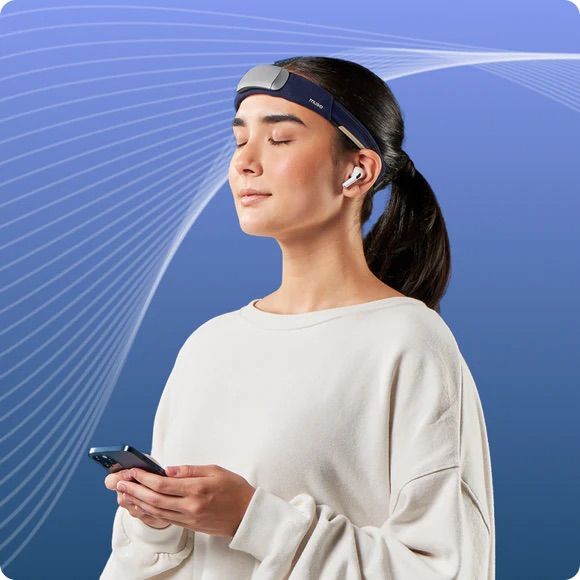
You may wonder how a device like muse is related to the subject of robotics. Well, my astute reader, several research studies and projects involve brain-computer interfaces (BCIs) to connect human brains to robots, computers, or other devices using brainwaves. BCIs use electroencephalography (EEG) or other techniques to record and decode brain activity, allowing users to control external devices through their thoughts. Some notable examples include:
1. BrainGate: BrainGate is a BCI research collaboration involving several academic and research institutions. They have developed a system that allows paralyzed individuals to control robotic arms and computer cursors using their thoughts. This technology uses a small implant in the brain's motor cortex, which decodes neural activity associated with intended movement.
2. University of Minnesota study (2013): Researchers at the University of Minnesota demonstrated that subjects could control a small quadcopter drone using their thoughts. Participants wore an EEG cap that recorded brain activity, which was then translated into control commands for the drone.
3. University of Tsukuba study (2016): Researchers at the University of Tsukuba in Japan developed a BCI system that enabled a participant to control a robotic exoskeleton using their thoughts. The system used EEG signals to decode the user's intended movement and translate it into robotic movements for the exoskeleton.
4. The Walk Again Project: This international collaboration aims to develop brain-controlled robotic exoskeletons for people with paralysis. The project has made significant progress in enabling individuals with spinal cord injuries to regain some mobility by controlling exoskeletons with their thoughts.
These studies and projects are just a few examples of ongoing research in the field of BCIs and their potential applications in connecting human brains to robots or other devices. The technology is still in its early stages but has already shown promising results for various applications, such as rehabilitation, assistance for people with disabilities, and even gaming.
Robots as Emotional Support
As our understanding of mental health continues to grow, so does the need for innovative solutions to address the challenges that come with it. Robots are now playing an increasingly significant role in the field of mental health, providing therapy, emotional support, and cognitive behavioral interventions in ways that were once unimaginable.
Interesting Fact
Here's an interesting fact about mental health in the United States that you can cite on your site:
According to the National Institute of Mental Health (NIMH), in 2020, approximately 1 in 5 adults in the United States (51.5 million people) experienced mental illness, which represents 20.6% of the U.S. adult population. This highlights the prevalence and importance of addressing mental health issues in the country.
Source: National Institute of Mental Health (NIMH). (2021). Mental Illness. Retrieved from
One of the most notable applications of robotics in mental health is the use of social robots for therapy. These are designed to interact with patients on a personal level, providing comfort and companionship while also assisting with therapy sessions.
The advantages of using robotics for mental health support are numerous when compared to traditional methods. For many individuals, interacting with a robot can feel less intimidating than speaking with a human therapist, making it easier to open up and share their feelings.
Additionally, the consistency and availability of support can be invaluable, especially for those who may have difficulty accessing traditional mental health services due to geographical, financial, or other barriers.
There are several real-life examples of robots improving mental health outcomes. In Japan, a robot called PARO, a therapeutic robot designed to resemble a baby harp seal, has been shown to improve mood and reduce agitation in individuals with dementia and Alzheimer's disease and even for autism therapy.
Another example, especially for people on the go is Woebot, a chatbot that provides cognitive behavioral therapy through a conversational interface. Woebot uses natural language processing and machine learning to adapt to the user's needs and preferences over time. By engaging with users in a friendly and non-judgmental way, Woebot can help reduce anxiety and improve mood.
Robots as Assistants in Healing
Using robotics in rehabilitation is revolutionizing how we approach physical and occupational therapy. By leveraging advanced technology and engineering, robots are providing patients with new opportunities to regain their strength, mobility, and independence after injury or illness.
One of the most significant areas where robotics is making a difference is in the field of stroke recovery. Stroke survivors often face a long and challenging road to regaining their physical abilities, and robotic rehabilitation devices can play a crucial role in their journey.
The Lokomat is a robotic exoskeleton that assists patients with gait training, helping them relearn how to walk after a stroke. By providing consistent and controlled support, it enables patients to engage in intensive therapy sessions that can lead to faster and more effective recovery.
Robots are also being used to improve mobility and fine motor skills in patients with a range of conditions, such as spinal cord injuries, cerebral palsy, and traumatic brain injuries. One such device is the ReWalk, an exoskeleton. These devices, in particular, have shown great promise in helping people with spinal cord injuries regain mobility.
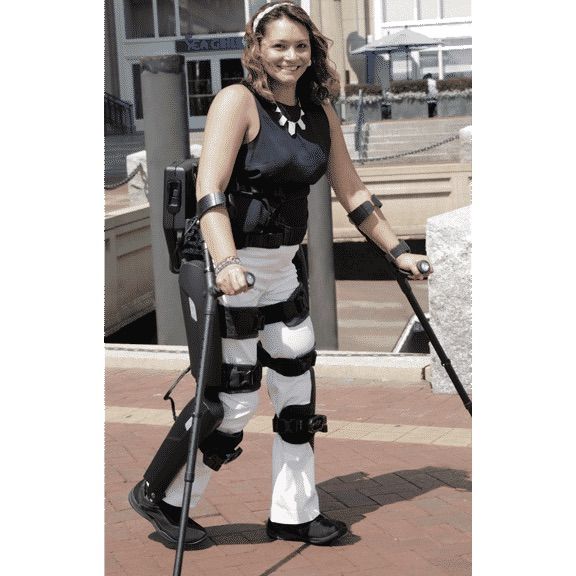
A Bright Future for Robotics and Human Health
As we've explored throughout this article, robotics is making a significant impact on the realms of meditation, mental health, and rehabilitation. The advancements in robotic rehabilitation have the potential to revolutionize how we treat physical and occupational therapy patients, enabling them to regain their strength, mobility, and independence more effectively.
As we continue to witness the growth and development of robotics in various aspects of our lives, it's essential to remain informed and engaged with the latest innovations. By doing so, we can better understand the ways in which these technologies can enhance our mental and physical well-being, leading us toward a healthier, happier future.
So let us embrace this exciting new era of robotics and health and see where the journey takes us.
Sometimes you don’t need to be next to a robot to make yourself happy; all you have to do is to wear one!


